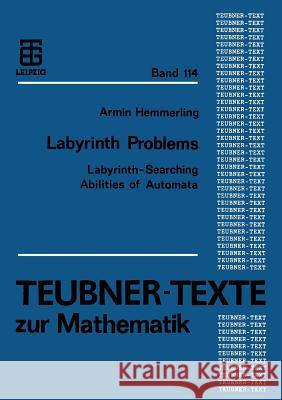Labyrinth Problems: Labyrinth-Searching Abilities of Automata » książka
topmenu
Labyrinth Problems: Labyrinth-Searching Abilities of Automata
ISBN-13: 9783322945617 / Niemiecki / Miękka / 2012 / 217 str.
Kategorie:
Kategorie BISAC:
Wydawca:
Vieweg+teubner Verlag
Seria wydawnicza:
Język:
Niemiecki
ISBN-13:
9783322945617
Rok wydania:
2012
Wydanie:
Softcover Repri
Numer serii:
000061319
Ilość stron:
217
Waga:
0.27 kg
Wymiary:
21.0 x 14.8 x 1.2
Oprawa:
Miękka
Wolumenów:
01











